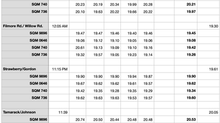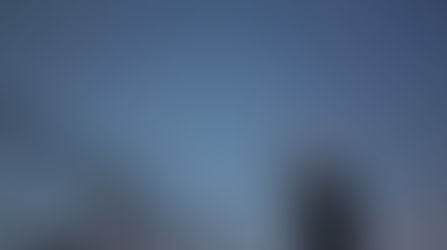Best Ways To Project The Sun
- Chuck Bueter
- Dec 30, 2023
- 3 min read
Updated: Jul 8, 2024
You can project the sun safely during a solar eclipse with several simple techniques. If you have a flat surface with a small hole in it, the hole acts like a lens in a pinhole camera or camera obscura. Sunlight passing through the hole will be projected onto the ground or a piece of paper held underneath, revealing the shape of the eclipsed sun at that moment. [Spoiler alert: Avoid the cardboard box device.]
The shape of the hole is not important. For example, you can simply cross your fingers and the light passing between the gaps will reveal individual images, as shown by Rick Fienberg. A smaller hole will be more focused than a large hole.

Start with a single hole. The further you hold the upper material from the surface, the larger the projected image will be. However, you will concurrently sacrifice surface brightness as the light is spread out over a larger area. When the foreground moon blocks out the distant sun, the shape of the sun is inverted. You can practice beforehand, with the result being a round projected sun. (Illustrations are not to scale.)

A popular attraction during a solar eclipse is the scene under a leafy tree. Even the smallest of holes in leaves will act as lenses and cause a multitude of projected images to appear on the ground.

Another popular technique is to use something with existing holes, such as pegboard or a collander. See the eclipse curriculum guide by Mitch Luman et al., 2023, for examples and images. You can take it further and have participants personalize their eclipse experience by punching holes in stiff paper to spell one's name or other significant words. Take a photograph of the paper underneath, shown below as crescents spelling "SUN".

For a timestamp of the event, set the starfield on a Platisphere to show how the north circumpolar stars are positioned at the time of eclipse darkness, even though those stars may not be visible in the mid-eclipse twilight. Or set the time on the platisphere for when you'll be viewing stars later that night, making a solar-projected preview of the nighttime alignment.

The Spot Mirror Projection by Ken Miller yields the largest projected image. Sunlight bounces off a dime-sized mirror to a white board or surface that is in a shaded space, like a wall under a building overhang. More details are here.

Projection techniques allow you to capture a long-duration image of the eclipse, too. You can make a solargraph that is exposed for the duration of sunlight hours on eclipse day. See https://www.nightwise.org/single-post/2017/08/25/Solar-Eclipse-Yields-Unique-Paper-Image for details.

Again, notice how the shape of the hole in this and any other projection device does not need to be round. Practice in advance, for you don't want the hole too big or the image will be fuzzy.

Projection methods are safe because they show progress of the eclipse without having lines of sight where a spectator can look directly at the sun. If you use a telescope, you can rear-project an image onto a surface and yield a safe magnified view. See the original instructions for making a Sun Funnel. A bonus feature is that the Sun Funnel will also show sunspots, which are likely in 2024 since the sun is active as it approaches solar maximum in its 11-year cycle.

You can also purchase projection devices such as a Sunspotter and others, as described at the American Astronomical Society (AAS) web page about projection techniques.
CAVEAT: Avoid the Box
As demonstrated above, the projection technique safely allows a group of people to view an eclipsed sun simultaneously. However, a popular method found online which uses a cardboard box has several shortcomings. Typically those instructions show someone putting their head in a box that has a pinhole on one end to see a tiny image on the other end. For inexperienced solar observers, it is neither intuitive nor rewarding. People will often think they are doing something wrong, so they look out the tiny pinhole itself and stare straight at the sun. Wrong!
Also, the distance between the two ends of the box require a specific sized hole in order for the projected image to achieve the best focus. If the hole is too big or too small, you can't change the box dimensions so the resultant image is out of focus. Avoid the box.








































